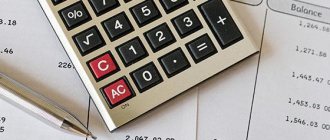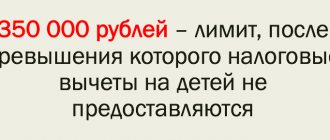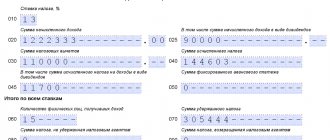Recipients of the Standard Child Tax Credit
- parents (adoptive parents ) - provide copies of the passport pages where the children are registered,
- spouses of parents (stepmother or stepfather of the child) - provide a copy of the marriage certificate,
- parents who are divorced or unmarried, but provide financial support for the child - provide an application for participation in providing for the child, documents confirming the payment of alimony,
- adoptive parents, guardians and trustees - provide copies of documents confirming their status.
Amount of deductions provided for children
To determine the amount of deduction due to the employee, along with the application, the employee brings to the accounting department documents confirming the right to deduction . The application is written once , and if the conditions for granting deductions have changed, a new one is written with the necessary documents attached.
| Deduction amount | To whom is it granted? | Supporting documents |
| 1400 | First child | Birth (adoption) certificate, certificate from an educational institution (if a student) |
| 1400 | Second child | |
| 3000 | Third child and each subsequent child | |
| 6000 | A disabled child, disabled group 1-2, up to 24 years old - a full-time student, if raised by adoptive parents | Certificate of disability, birth certificate, certificate from an educational institution (if a student) |
| 12000 | Disabled child, disabled group 1-2, up to 24 years old – full-time student |
In 2021, the Ministry of Finance clarified that the parent of a disabled child has the right to receive two deductions at the same time - 1400 (3000) and 12000, or 1400 (3000) and 6000 if raised in a foster family.
When to apply new 2-NDFL codes
Regulatory legal acts (NLA) of federal executive authorities come into force 10 days after the day of their official publication, unless the acts themselves establish a different procedure for their entry into force (clause 12 of Decree of the President of the Russian Federation dated May 23, 1996 No. 763 on the procedure for entry into force by virtue of regulatory legal acts). The commented order of the Federal Tax Service was published on the official Internet portal of legal information on December 21 and does not contain any provisions on the procedure for entry into force. Accordingly, the validity of this document begins on January 1. That is, starting from this date, when filling out income certificates for individuals for 2021, new codes for types of income and deductions are applied. Let us recall that the Federal Tax Service insisted on precisely this procedure for applying the codes (see “Federal Tax Service: new income and deduction codes must be indicated in 2-NDFL certificates for 2021”).
Fill out and submit 2‑NDFL online for free with new codes
However, there is another position regarding the date of entry into force of the order with new codes. According to the tax lawyer of Accounting Online, Alexey Krainev, in this case one must be guided by paragraphs 1 and 5 of Article of the Tax Code. These paragraphs stipulate that regulatory legal acts on taxes and fees of federal executive authorities come into force no earlier than one month from the date of their official publication and no earlier than the 1st day of the next tax period for the corresponding tax. If you follow this rule, the order will come into force on January 22, 2021 (see “When new codes for 2-NDFL come into effect”).
Double deduction
| Employee category | Note |
| Single parent | Certificate from the registry office about the status of a single mother in form 25. If an employee gets married, he loses this right. If he subsequently gets divorced and his spouse did not adopt the child, he can again receive a double deduction |
| One of the two parents, if the other refused his deduction | In addition to the second parent’s application to refuse to receive a deduction, a 2-NDFL certificate from his work is required to prove that he himself has the right to this deduction in order to refuse it |
Classification of new codes
Let's look at the most popular deductions. They are divided into standard, social, investment, property.
So what are the standard deductions? This range is 104-105, 126-149. Deduction code 105 in the 2-NDFL certificate is used quite often.
Codes 105 and 104 are considered personal deductions in the amount of five hundred rubles. and three thousand rubles, which are provided to those who have done a lot of service to the country (combatants, liquidators of accidents at nuclear power plants, holders of state awards). We will consider codes 126-149 in detail at the end of the article.
Let's talk about property deductions (311-312).
What does deduction code 311 mean in the 2-NDFL certificate? This is the amount that the taxpayer spent on the construction of his house.
To receive a deduction, you can purchase land plots provided for individual housing construction and land plots with residential buildings on them. That is, 311 is the property deduction code in the 2-NDFL certificate.
Start and stop dates for deductions
| Start of law | Termination of rights |
| Birth of a child | When a child reaches the age of 18 if he is not studying |
| Adopting a child | The child reaches the age of 24 if he is studying full-time, and it does not matter whether he is on a paid basis or not |
| Establishment of guardianship (trusteeship) | Loss of the right to raise a child |
| Transferring a child to a family | Death of a child |
| Getting a child married is a controversial position of the Ministry of Finance |
Some unusual situations
- If from the beginning of the calendar year the employee had no income , for example, he was on maternity leave, and deductions were not provided to him accordingly, he has the right to a summarized deduction from the beginning of the year in the month when he received the income . True, this rule does not work in reverse. If the receipt of income is interrupted and there is no income until the end of the year, then deductions are not provided in these months.
- If one parent’s income has already reached 350 thousand rubles, he can refuse to receive a deduction in favor of the other parent by providing the relevant documents.
- If an employee’s two older children are already adults, and the third is not yet 18 years old, he has the right to a deduction in the amount of 3,000 rubles. Attached are copies of the birth certificates of all three children, which serve as confirmation that the child for whom the deduction is issued is the third.
- If an employee has not received a deduction from the tax agent - his employer, he does not lose the right to it, and can submit a tax return in form 3-NDFL to the tax authority at the place of registration with the following documents attached:
– certificates in form 2-NDFL from the employer,
– child’s birth/adoption certificate,
– copies of passport,
– applications with bank card details for the refund of over-withheld tax.
What does tax deduction code 126 mean?
The code is indicated in the 2-NDFL certificate, as well as in accounting and tax registers intended for recording the income and expenses of individuals. Code 126 means that the taxpayer (parent or adoptive parent) has the right to receive a tax deduction for the first child who is not yet 18 years old, or up to 24 years old, provided that he is a full-time student at an educational institution.
According to current legislation, the deduction amount is 1,400 rubles. For example, if a person received income in the amount of 30,000 rubles and has one child under 18 years old (or under 24 years old, a full-time student), then, in the absence of the right to other deductions, the amount subject to taxation will be:
30,000 - 1400 = 28,600 rubles
Information about codes and deduction amounts for children is indicated only in section 3 of the 2-NDFL certificate. Please note: the Appendix to this document also contains similar fields, but deductions for the child are not indicated in them.
Deduction codes in the 2-NDFL certificate
| Code | Deduction |
| 126 | A deduction for the first child under 18 years of age, a student under 24 years of age is received by the parent, parent’s spouse, adoptive parent |
| 130 | The deduction for the first child under 18 years of age, a student under 24 years of age is received by a guardian, trustee, adoptive parent and spouse of the adoptive parent |
| 127 | A deduction for a second child under 18 years of age, a student under 24 years of age is received by the parent, parent’s spouse, adoptive parent |
| 131 | The deduction for a second child under 18 years of age, a student under 24 years of age is received by a guardian, trustee, adoptive parent and spouse of the adoptive parent |
| 128 | A deduction for a third child under 18 years of age, a student under 24 years of age is received by the parent, parent’s spouse, adoptive parent |
| 132 | A deduction for a third child under 18 years of age, a student under 24 years of age is received by a guardian, trustee, adoptive parent and spouse of the adoptive parent. |
| 129 | A deduction for a disabled child under 18 years of age, a student under 24 years of age, who is a disabled person of group 1-2, is received by the parent, parent’s spouse, adoptive parent |
| 133 | A deduction for a disabled child under 18 years of age, a student under 24 years of age, who is disabled in groups 1-2 is received by a guardian, trustee, adoptive parent and spouse of the adoptive parent |
| 134 | A double deduction for the first child under 18 years of age, a student under 24 years of age is received by the only parent, adoptive parent |
| 135 | A double deduction for the first child under 18 years of age, a student under 24 years of age is received by the sole guardian, trustee, foster parent |
| 136 | A double deduction for a second child under 18 years of age, a student under 24 years of age is received by the only parent, adoptive parent |
| 137 | A double deduction for a second child under 18 years of age, a student under 24 years of age is received by the sole guardian, trustee, foster parent |
| 138 | A double deduction for the third and subsequent children under 18 years of age, a student under 24 years of age is received by the only parent, adoptive parent |
| 139 | A double deduction for the third and subsequent children under 18 years of age, a student under 24 years of age is received by the only guardian, trustee, foster parent |
| 140 | A double deduction for a disabled child under 18 years of age, a student under 24 years of age, who is disabled in groups 1-2, is received by the only parent or adoptive parent |
| 141 | A double deduction for a disabled child under 18 years of age, a student under 24 years of age who is disabled in groups 1-2, is received by the only adoptive parent, guardian, trustee |
| 142 | A double deduction for the first child under 18 years of age and a student under 24 years of age is received by one of the parents if the second parent refuses the deduction |
| 143 | A double deduction for the first child under 18 years of age and a student under 24 years of age is received by one of the adoptive parents if the second adoptive parent refuses the deduction |
| 144 | A double deduction for a second child under 18 years of age and a student under 24 years of age is received by one of the parents if the second parent deduction |
| 145 | A double deduction for a second child under 18 years of age, a student under 24 years of age is received by one of the adoptive parents if the second adoptive parent refuses the deduction |
| 146 | A double deduction for the third child and subsequent children under 18 years of age, a student under 24 years of age is received by one of the parents if the second parent refuses the deduction |
| 147 | A double deduction for the third child and subsequent children under 18 years of age, a student under 24 years of age is received by one of the adoptive parents if the second adoptive parent refuses the deduction |
Rate the quality of the article. Your opinion is important to us:
Table of deduction codes
Each deduction code in the 2-NDFL certificate is indicated by the accountant in accordance with the current table for the current year, given in the appendix to the order of the Federal Tax Service dated November 2015.
It is on the basis of this application that the tables below are formed, which display codes with decodings and amounts.
Standard deductions
| Code | Decoding | Amount, rub. |
| 104 | Persons nominated for the award of the Second World War, Heroes of the Russian Federation, former prisoners of ghettos and concentration camps, participants in the siege of Leningrad, evacuees from the zone of radioactive contamination, relatives of fallen military personnel | 500 |
| 105 | Victims of radiation sickness, as well as persons who took part in the liquidation of the consequences of the Chernobyl accident | 3000 |
| 114-125 | Excluded | — |
| 126/130 | For 1 child per parent/guardian or trustee | 1400 |
| 127/131 | For the 2nd child to a natural or adoptive parent | 1400 |
| 128/132 | For the 3rd and subsequent children to natural and adoptive parents | 3000 |
| 129/133 | For a child/disabled person, as well as for a disabled person of 1-2 groups under the age of 24 years undergoing training, to a parent (native or adopted) | 12000/6000 |
| 134-149 | For each of the children, as well as for a child with the status of a disabled child or for a disabled student of category 1-2, to a single parent (natural or adopted). Applicable to single parents, as well as to those who have provided a written refusal to receive benefits | Double the corresponding amount |
Attention! The tax base is reduced until the taxpayer’s income from the beginning of the tax period reaches an amount of 350 thousand rubles. If there is one parent in the family, he is entitled to a double deduction.
Property deductions
| Code | Decoding | Amount, rub. |
| 311 | Taxpayer expenses incurred during the construction or purchase of residential real estate: houses, apartments, rooms, shares in living space, plots for individual housing construction, etc. | Actual expenses incurred, even if the living space or land was purchased with borrowed funds. Interest paid on a loan or mortgage is not taken into account |
| 312 | Payment of interest on a mortgage issued for the purchase or construction of housing, as well as on loans aimed at refinancing a previously issued mortgage | Paid in the amount of actual expenses, but does not exceed the amount of 3 million rubles and only in relation to one object |
Social deductions
| Code | Decoding | Amount, rub. |
| 320-321 | External, full-time or part-time training for employees, as well as their children under the age of 24 (including adopted ones) | The amount of training expenses, but within 50,000 rubles |
| 324 | Expenses for treatment of the taxpayer, as well as his parents, children, spouse, wards | The amount of expenses incurred, but not more than 120 thousand rubles |
| 325 | Expenses for voluntary insurance of the taxpayer, as well as his close relatives | The maximum deduction amount is 120 thousand rubles |
| 327 | Payments to pension accounts of non-state pension funds | Compensation in the amount of no more than 120 thousand rubles |
| 328 | Payments towards the funded part of pension provision | In the amount of expenses incurred |
Attention! Features of reducing the tax base related to the social needs of citizens are regulated by Article 219 of the Tax Code of the Russian Federation.
Professional deductions
| Code | Decoding | Amount, rub. |
| 403 | Expenses of a taxpayer incurred in the performance of his official duties as determined by the agreement with the employer | Expenses incurred subject to documentary evidence |
| 404 | Costs incurred by the author in the process of making a scientific discovery, creating an object of art or culture, inventing a useful technical or intellectual model, etc. | |
| 405 | Amounts spent within the limits of expenditure standards included in the deduction when calculating the tax on royalties | Percentage of income |
Good to know! Professional expenses taken into account when reducing the tax base are also limited by the limit defined in Article 221 of the Tax Code of the Russian Federation. Download for viewing and printing:
Tax Code of the Russian Federation (part two) dated 08/05/2000 N 117-FZ (as amended on 04/03/2017) (with amendments and additions, entered into force on 05/04/2017)
Deductions from remuneration and non-taxable income
| Code | Decoding |
| 501-502 | Gifts received in cash and in kind at competitions, competitions, from individual entrepreneurs and legal entities. persons |
| 503 | Free financial assistance provided by the employer (defined in the Tax Code as material assistance) |
| 504 | Reimbursement of the cost of purchased medications for the employee, as well as for his family members |
| 508 | Financial assistance from the employer to employees who become parents (natural or adopted) |
Important! The tax base is reduced by the amount of income, but not more than the limit established in Art. 117 of the Tax Code of the Russian Federation (Article 28). Download for viewing and printing:
Tax Code of the Russian Federation (Part One) dated July 31, 1998 N 146-FZ (as amended on December 28, 2016)









